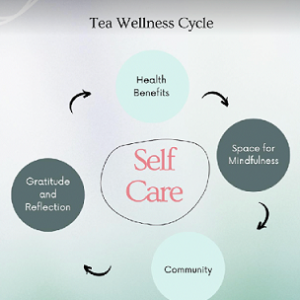Sustainability in interior architecture designing for the future
Sustainability in Interior Architecture – As contemporary society grapples with pressing environmental challenges, the role of sustainability in interior architecture has emerged as a crucial focus within the design discipline. This interdisciplinary approach entails not only the efficient use of resources but also the optimization of indoor environments to enhance well-being and reduce carbon footprints. By incorporating elements such as natural lighting, sustainable materials, and energy-efficient systems, interior architects strive to create spaces that are both aesthetically pleasing and environmentally responsible. The integration of sustainable practices invites a profound transformation in how spaces are conceived, fostering a holistic understanding of architectures impact on ecological and social systems. For instance, the concept of ‘Sustainability of Green Buildings’ illustrated in encapsulates these interconnected aspects, emphasizing the multifaceted nature of sustainability and its significance for future-oriented design strategies.
II. The Importance of Sustainable Materials
The significance of sustainable materials in interior architecture cannot be overstated, as their use plays a critical role in minimizing environmental impact. Sustainable materials not only reduce reliance on non-renewable resources but also foster healthier indoor environments, thereby enhancing occupant well-being. This aligns with contemporary ecological design philosophies that advocate for efficiency and waste reduction, evidenced by recent studies emphasizing recycling and reuse within architectural curricula, which advocate for a systematic approach to environmental sustainability (Munteanu et al.). Furthermore, integrating sustainable materials reflects a commitment to broader ecological principles, as seen through initiatives that enhance energy efficiency and resource management in architectural practices (Amira S Abouelela). The strategic implementation of these materials contributes to the creation of spaces that are both aesthetically pleasing and environmentally responsible, fulfilling the urgent need for a transition towards sustainable living. The visual representation of these concepts through effectively encapsulates the interrelated factors of sustainability in architecture.
III. Energy Efficiency and Innovative Design Strategies
In contemporary interior architecture, energy efficiency is increasingly intertwined with innovative design strategies, promoting sustainability and environmental stewardship. Effective integration of renewable energy technologies, such as solar panels and energy-efficient lighting, can significantly reduce a buildings carbon footprint while enhancing aesthetic appeal and functionality. The pursuit of innovative design goes beyond mere material selection; it involves rethinking spatial arrangements and incorporating flexible learning environments that foster engagement and well-being among users. Important case studies in educational spaces illustrate how well-designed environments can inspire creativity and support active learning, as seen in the modular Eco-Class framework that emphasizes ecological design measures (Elnokaly et al.). Furthermore, participatory initiatives like those at Ghent University exemplify how collaborative efforts can develop actionable sustainability policies, demonstrating the crucial role of user involvement in fostering energy-efficient interiors (Block et al.). The strategic application of these concepts is essential in developing resilient and resource-efficient spaces for future generations, underscoring their importance in the discourse of sustainable design .
IV. The Role of Technology in Sustainable Interior Architecture
The integration of technology in sustainable interior architecture is crucial for optimizing energy efficiency and enhancing environmental quality within built spaces. Advanced design software and energy modeling tools enable architects to simulate various scenarios, allowing them to evaluate the impacts of different materials and layouts on energy consumption and occupant well-being. Furthermore, technologies such as smart sensors can regulate lighting and HVAC systems based on occupancy, significantly reducing waste and promoting sustainability in everyday use. As emphasized in recent research, the role of educational institutions also includes fostering a culture of sustainability through curricula that incorporate modern technologies. This is particularly vital in regions like the Middle East, where sustainable practices are essential for future development ((Elnokaly et al.)). Moreover, innovative design approaches, such as the implementation of renewable resources and smart materials, contribute to resource efficiency, ultimately aligning with the broader goals of sustainability in interior architecture ((Amira S Abouelela)). To illustrate these concepts, effectively visualizes the interconnected approaches to sustainability, showcasing how various efficiency factors work synergistically to create environmentally conscious interiors.
Image1 : Diagram of Key Factors in the Sustainability of Green Buildings
V. Conclusion
In conclusion, the urgent need for sustainability in interior architecture cannot be overstated, as it has the potential to transform not only the built environment but also our collective impact on the planet. By integrating eco-friendly materials, innovative technologies, and sustainable practices into design processes, architects and designers can significantly reduce energy consumption and enhance indoor environmental quality. As illustrated in , a modern sustainable home embodies these principles through its renewable energy features and ecological landscaping, serving as a model for future developments. Such designs not only promote energy efficiency but also foster a deeper connection between inhabitants and their environment. Ultimately, embedding sustainability into the ethos of interior architecture ensures the creation of spaces that are not only aesthetically pleasing but also responsible, resilient, and conducive to a healthier future for both people and the planet.

References:
- Munteanu, Angela. “Sustainable Principles Implemented in Architecture and Interior Design through Eco Pieces of Furniture and Lighting”. ‘Redfame Publishing’, 2022, https://core.ac.uk/download/524752853.pdf
- Amira S. Abouelela. “Smart Sustainable approach to improve King Faisal Students’ University housing interior design and Identity”. Ninety Nine Publication, 2021, https://core.ac.uk/download/621414554.pdf
- Elnokaly, Amira, Elseragy, Ahmed. “Amalgamating sustainable design strategies into architectural curricula”. Sustainability Collection / Common Ground, 2009, https://core.ac.uk/download/16498136.pdf
- Elnokaly, Amira, Elseragy, Ahmed, Gabr, Mohamed. “Modular eco-class: an approach towards a sustainable innovative learning environment in Egypt”. 2009, https://core.ac.uk/download/52322.pdf
- Block, Thomas, Van de Velde, Riet. “Transition UGent: a bottom-up initiative towards a more sustainable university”. ISCN – International Sustainable Campus Network, 2016, https://core.ac.uk/download/55768294.pdf





